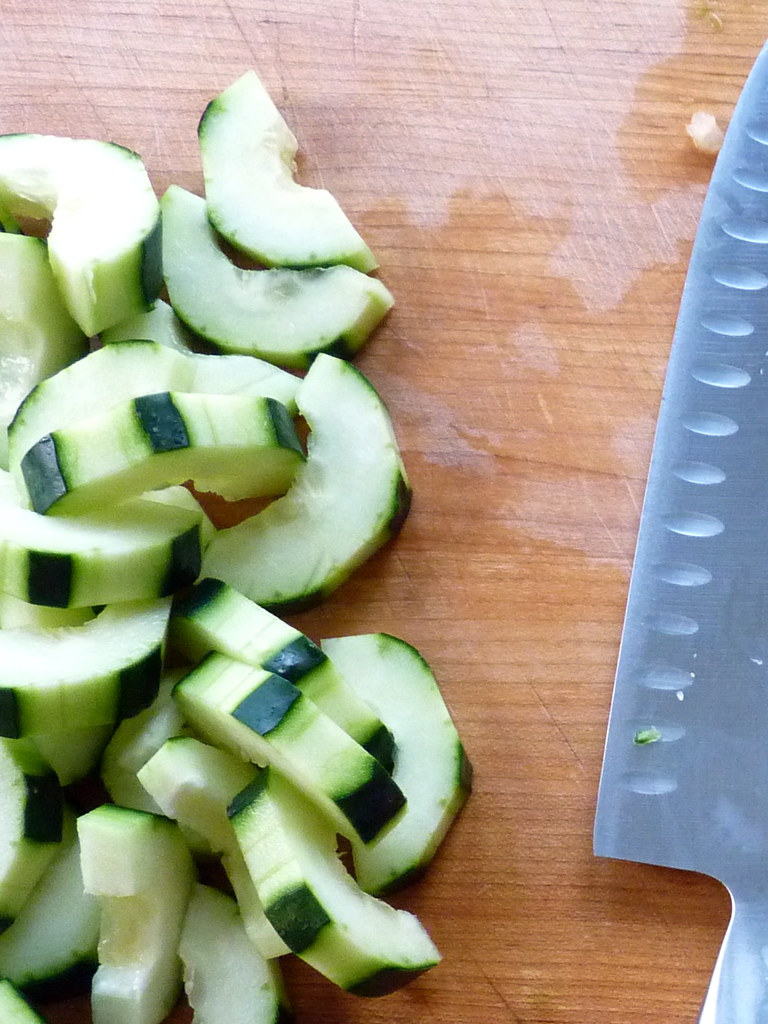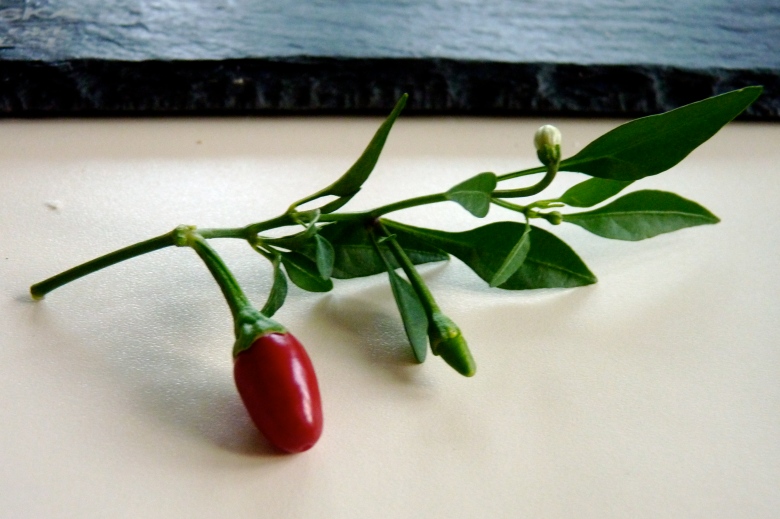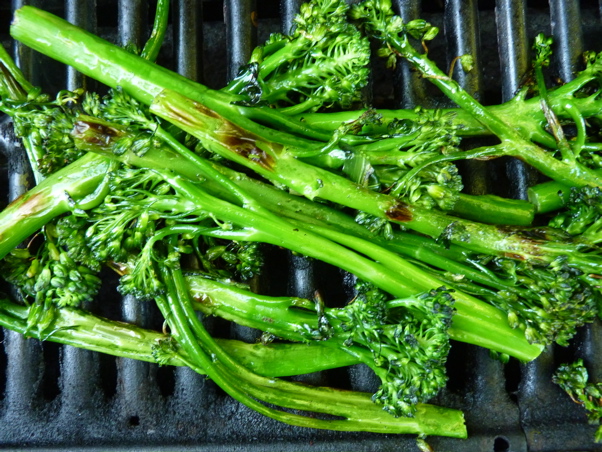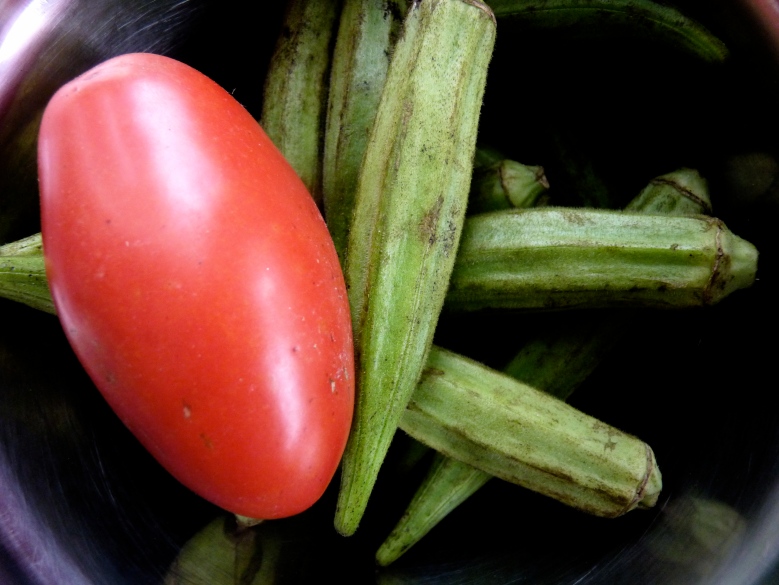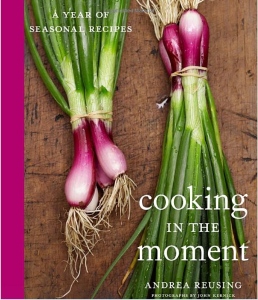 I picked up Cooking in the Moment for two reasons. First, it fit the seasonal theme of my last post. Second, Reusing is posed on the back with a wool scarf and a black and white rooster under her arm. I admit it, I have thing for women who know how to accessorize with poultry. The photographer may have overdone the backwoodsy feel of the book: farmers in overalls, coolers in the trunk of a station wagon, a family cracking crabs at a table sawn out of a tree-trunk. I like the picture of a contraption for catching fruit flies and the jar of fat labeled “Not for Human Consumption,” but all this overlooks the eclecticism of Reusing’s recipes. She’s not another down-home cook like Paula Deen, running out into the field to slather butter on the tender shoots of corn as they first break from the soil. Reusing is from Manhattan originally; she grew up eating in China-town; her North Carolina restaurant is pan-asian, and her cookbook is global.
I picked up Cooking in the Moment for two reasons. First, it fit the seasonal theme of my last post. Second, Reusing is posed on the back with a wool scarf and a black and white rooster under her arm. I admit it, I have thing for women who know how to accessorize with poultry. The photographer may have overdone the backwoodsy feel of the book: farmers in overalls, coolers in the trunk of a station wagon, a family cracking crabs at a table sawn out of a tree-trunk. I like the picture of a contraption for catching fruit flies and the jar of fat labeled “Not for Human Consumption,” but all this overlooks the eclecticism of Reusing’s recipes. She’s not another down-home cook like Paula Deen, running out into the field to slather butter on the tender shoots of corn as they first break from the soil. Reusing is from Manhattan originally; she grew up eating in China-town; her North Carolina restaurant is pan-asian, and her cookbook is global.
If you want authentic Southern, go with the Lee Bros. If you want farm, go with River Cottage. Cooking in the Moment is more about doing simple–and sometimes clever–things with fresh ingredients. And drinks. I guess that’s the third reason I bought the book. “The Homeward Angel,” reads like a biography. Named after the NC cemetery angel that inspired Thomas Wolfe–“Look homeward angel now, and melt with ruth”–it’s really just a Manhattan in disguise: 2 ounces rye whiskey, 1/2 ounce sweet vermouth, 1/4 ounce orange bitters, two pickled sour cherries and a splash of the brine. Can a manhattan be authentically North Carolina? Who cares. Maraschino cherries are usually what keeps me away from manhattans, including the island. And sour cherries, who knew? We’re fortunate enough to get good sour cherries as far north as Philadelphia, but only for a couple of weeks out of the year. Reusing also has a wicked cherry relish–one sliced red onion, sixteen pitted cherries, and two tablespoons of red wine vinegar–that goes with just about anything pork or poultry. She uses the leftover stones to flavor panna cotta. Doesn’t that sound like someone who knows how to make the best of the most local, most ephemeral of ingredients?
I like that local and fresh isn’t equated with regional or parochial. There may be southern twang to the ingredients, but if she uses okra, it’s fried with Indian spices. If she’s pickling, it’s just as likely to be pumpkin with with thai chiles as it is green tomatoes. If she can’t find ingredients nearby, she actively encourages local farmers to grow them. So there’s recipes for flash-fried shishito peppers alongside more conventional recipes for grilled broccoli with garlic and anchovies.
That said, it’s difficult to sustain simple, whimsical, and worldly all at the same time. The results are uneven. One week you may get a salad made with watercress with a fried egg and black sesame sauce, and another week you might get a perfectly ordinary recipe for fried chicken. Okay, I get it, it’s North Carolina. She has to include fried chicken. But is chicken seasonal? Hers aren’t even local; she fed-exes hers from Kansas. Don’t get me wrong. I like fried chicken in all its varieties, but there are so many other recipes out there, it’s hard to contribute something new. William Styron devoted a whole essay to Southern Fried chicken. How do you compete with that? Apparently with, 1) heat oil, 2) add chicken.
The timeline is the most frustrating constraint. I like the idea of a cookbook where recipes are organized not just by seasons or months, but by weeks; I’m just not sure it works. The so-called “seasons” of foods vary considerably in their peaks and duration. It doesn’t follow the rhythm of a metronome. Cooking in the Moment is slender too, so you may have only two recipes for any one time of year. I like to stick with a cookbook, immerse myself in it for a few weeks or months, and move on, so this was painful. I bought the book in “Early April,” so I had to choose from cooking trout in a skillet or making bacon and eggs in a paper bag over a campfire. It was raining, so I couldn’t exactly go and dig a fire pit in the backyard. I picked up some of the early season trout fillets at the Ardmore’s farmers market, dusted them with cornmeal, and cooked them in a skillet. It was the best store-bought trout I’ve ever made, but I still felt like I was missing something because I wasn’t in a tent in the Poconos. In the meantime, I was aching for “broiled ripe figs with warm ricotta and honey,” but I had to wait until September. I’ll probably also have to move, preferably to because figs are never local here.
Bottom line, it serves as a good model for how to think about food and place, but don’t try and follow it lock-step. I’ll probably never be true locavore, because I can’t give up Spanish vinegar, tropical fruits, or for that matter citrus. If Pennsylvanians went truly loco, they’d probably all get scurvy. But I know to look for apples during apple season. If there’s one thing the Northeast does well it’s grow apples, pick apples, store apples, distill apples, and contemplate apples. “My long two-pointed ladder’s sticking through a tree / Toward heaven still”. You’ll never see a Robert Frost poem about okra.
